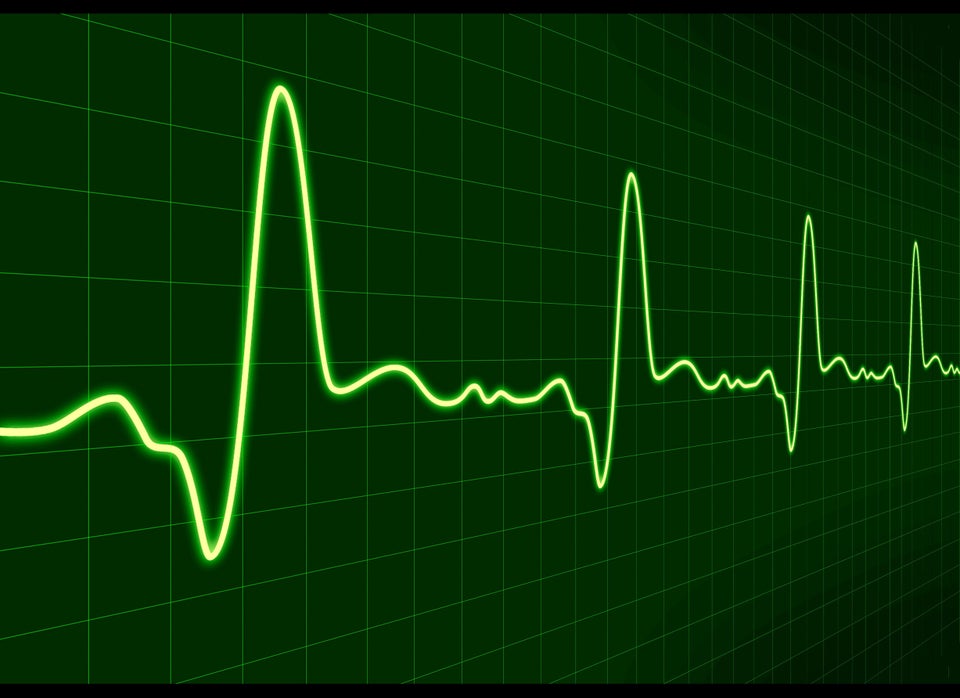
SPECIAL FROM Grandparents.com
If it seems like everyone you know is being diagnosed with something, you're not imagining things. Yes, as we age, more health problems arise, but also on the increase—medical overdiagnosis of everything from thyroid cancer to low testosterone.
“The problem of overdiagnosis is big and growing, because with the increasing use of high-resolution diagnostic tests, it’s easier to pick up smaller, early, mild disease," says Steven Woloshin, M.D., M.S., professor of medicine at the Dartmouth Institute for Health Policy and Clinical Practice. “The hope is that by picking things up early, we can prevent conditions from becoming bad. But some things are never destined to get bad. And all treatments have side effects.”
Dr. Woloshin is at the forefront of an international medical movement that’s battling the overdiagnosis epidemic. He’s coauthor, with his Dartmouth colleague Lisa Schwartz, M.D., M.S., and Dr. H. Gilbert Welsh of "Overdiagnosed: Making People Sick in the Pursuit of Health."
“It’s hard to take someone who is feeling well and make them better—but it’s really easy to make them worse,” Dr. Woloshin says. Even when it doesn’t cause side effects, overdiagnosis often instills stress, anxiety, and fear into patients.
Overdiagnosis, he says, comes in different three forms. Why people are overdiagnosed? It generally has to do with the following:
- The detection of a “disease” in a person with no symptoms—which won’t ever cause problems. A key example is an incredibly slow-growing cancer that can now be found through improved testing—but won’t progress to make a person sick.
- The creeping extension of a definition of a disease or risk factor, so that it’s harder and harder for anyone to be normal. “Years ago, the definition of high cholesterol was lowered, so more and more people got diagnosed with high cholesterol,” says Dr. Woloshin.
- Normal experience, including aging, that gets redefined as a disease symptom—with a pricey pharmaceutical waiting in the wings to alleviate the new condition. “Do you get up and walk around at night sometimes? Must be restless leg syndrome,” says Dr. Woloshin as an example of how doctors can overdiagnosis. Similarly, drug-sponsored ad campaigns now endeavor to convince men who feel out-of-sorts and tired that they may have “low T” — clinically low testosterone levels.
Dr. Woloshin admits that overdiagnosis is complicated. When your doctor detects that you have a medical condition, it’s hard not to want to get it treated. And that may be the best thing to do. But not always.
Here are 5 medical conditions that, according to Dr. Woloshin, are commonly overdiagnosed. That doesn’t mean they don’t exist. But it does mean you should ask questions, and be cautious about tests, and treatments.
1. Chronic kidney diseaseBefore 2002, about 1 in 58 adults had chronic kidney disease, putting them at risk of eventual kidney failure. Then the definition based on lab values changed. Now 1 in 8 adults have the “disease,” based on new criteria—and that rises to 1 in 2 past the age of 70. Yet kidney failure rates haven’t risen—and many people with “chronic kidney disease” will never get sick from their “disease.” An article in the British Medical Journal concluded: “The combination of the large numbers now labelled [sic] as having chronic kidney disease with low rates of total kidney failure suggest many of those diagnosed will never progress to symptomatic forms of kidney disease.”
2. Low "T""There are a lot of American men,” write Drs. Woloshin and Schwartz. “Some are grumpy. Some are tired. Some may not even be interested in sex at the moment. And all of them are aging. This is the intended audience for the Low T campaign. Whether the campaign is motivated by a sincere desire to help men or simply by greed, we should recognize it for what it is: a mass, uncontrolled experiment that invites men to expose themselves to the harms of a treatment unlikely to fix problems that may be wholly unrelated to testosterone levels.”
Says Dr. Woloshin, “There are real questions about the safety of the testosterone drugs that are out there, especially for men who are older and have underlying heart problems,” One study in older men was actually stopped early because of a substantial increase in heart problems, he notes. “We really don’t know if this treatment is safe, or even effective,” he says. “‘Low T’ is one place to be really skeptical.”
3. Pre-dementiaThe promise of identifying mild cognitive impairment, or “pre-dementia,” is that medical intervention can slow the progression to Alzheimer’s or other forms of dementia. Unfortunately, such effective treatments haven’t been developed yet. And it’s not clear how likely it is that the broader swath of people identified by new criteria as having mild cognitive impairment will actually develop dementia. “No one really knows,” says Dr. Woloshin. “Many people with mild cognitive impairment don’t go on to develop Alzheimer’s. The real question is whether this is doing anyone a favor—or just scaring the hell out of them.”
4. Thyroid cancer and othersBetween 1979 and 2009, the number of Americans diagnosed with thyroid cancer each year tripled. Yet the number of people who died from thyroid cancer stayed exactly the same. The increase was due almost entirely to a form of thyroid cancer that grows very, very slowly.
Similar issues have arisen in slow-growing forms of prostate cancer, as well as a form of breast cancer, “ductal carcinoma in situ,” that is non-invasive. Modern diagnostic technology has become so sophisticated that it can pick up cancers that may never cause harm. So what do you do? The problem is complicated by the factor that it’s not easy to figure out in a particular patient how likely the tiny, slow-growing cancer might stay harmless—or turn lethal. Instead of chemo, radiation, or surgery, some cancer doctors now advise “watchful waiting”, also known as “active surveillance". Says Dr. Woloshin, “In prostate cancer, watchful waiting is the most developed. It’s an increasingly acceptable option.”
5. Crazy testsA few years ago, there was a craze for “total body scanning.” The promise was that these CT scans could pick up cancer, heart problems, and other ills in healthy people. But it’s a really bad idea for healthy people. “It’s a Pandora’s box—once you find something, it opens the door to all sorts of overdiagnosis, plus you’re getting radiation from the test, and that’s a known carcinogen,” says Dr. Woloshin. “It’s the mother of all bad tests.”
More subtle risks are posed by good tests that are used when they are not necessary. A national medical campaign, Choosing Wisely, has brought together more than 50 medical societies to identify tests that are used in unnecessary ways. Consumer Reports has been helping to spread the word. Among the tests identified as unnecessary are imaging tests for low-back pain, CT scans and MRIs for headaches, and bone-density scans for women at low risk of osteoporosis.
While overdiagnosis poses risks, so does underdiagnosis. It’s no excuse to avoid going to the doctor. But you can protect yourself with a little skepticism. “Be cautious about getting tested,” says Dr. Woloshin. “If someone is trying to sell you a test, ask why. Ask for the evidence. If you can’t find evidence, maybe you want to skip it.” A wary attitude is even more important if someone is trying to convince you to take a medication or supplement. “If you’re feeling well, be careful about someone who says they will make you feel better.”
Read more from Grandparents.com:7 ways your house is making you sickIs your toothbrush making you sick?8 best remedies for spring allergies
